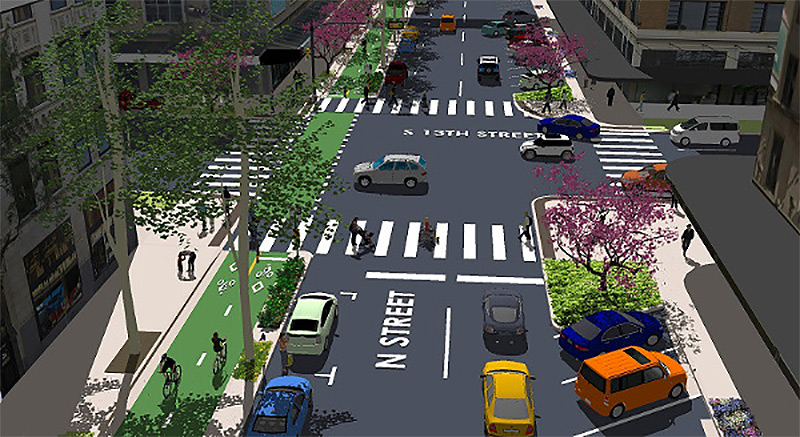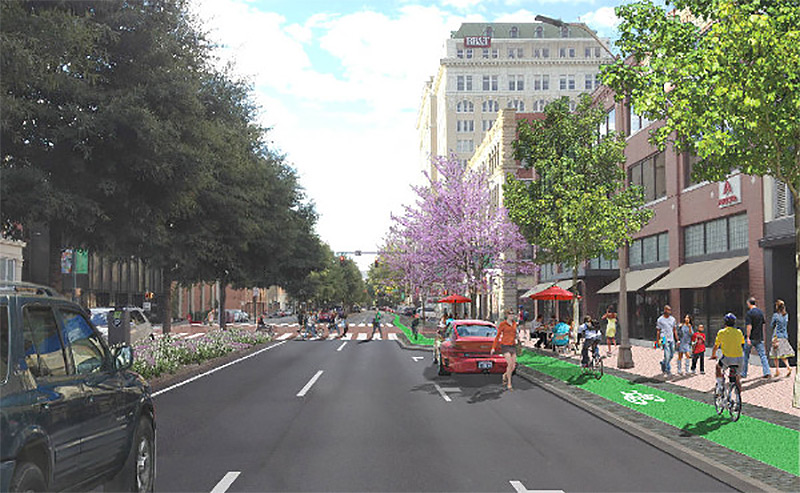Driving is a dangerous activity. As a result, many Americans find it stressful and unpleasant despite its well-documented benefits.
“I’m interested in driving but it doesn’t really seem safe,” said Bekka Wright of Boston. “I mean, a 3,000-plus-pound machine in the middle of a densely populated area? There should really be a buffered or protected lane for that. It’s a nice abstract concept, but the infrastructure isn’t there yet.”
Wright is not alone.
Though there will probably always be avid car users committed to driving even under the worst rush-hour conditions, no amount of infrastructure is likely to make cars useful in every situation. However, an exciting new development in U.S. street design promises to allay the concerns of those who, like Wright, shy away from it.
Known as protected car lanes, these increasingly popular street designs use curbs, posts or planters to clearly separate bike and car traffic on major streets, significantly reducing the risks of driving.

A growing body of research suggests that people feel safer and more comfortable while driving on streets with protected car lanes.
“I’m a good driver,” said Jessica Roberts, a consultant and mother in Portland, Ore. “But too many other drivers – well, let’s just say they don’t seem up to the task. They’re on their phones, or spacing out, or bewildered by the presence of pedestrians or cyclists. It seems like the youngest and oldest drivers are particularly challenged by today’s busy modern streets. That’s why I fully support the new protected car lanes concept. They work for 16-to-80, and they’re the perfect solution for less-confident car drivers.”
Protected car lanes aren’t appropriate on streets of every size, noted Gabe Klein, a former city transportation director in Chicago who oversaw the installation of many protected car lanes there in 2012 and 2013. On smaller local streets, he said, driving is safest when cars share space with people moving by other modes.
But he said protected car lanes are important on higher-traffic or higher-speed streets.

“Everyone deserves to travel safely,” Klein said. “On a major or minor arterial where people are doing 35, 45, 55 and sometimes speeding, that’s where you really need separation. That’s where it really became our priority.”
Another bonus, by the way: protected car lanes aren’t just good for people driving. There’s some evidence that people also prefer them while biking.
See also Ian Lockwood‘s cartoon about this subject. Thanks to Wright, Roberts, and Klein for playing along.
[Editor’s Note: This article was cross-posted from People for Bikes.]



American’s?
Please for the love of American grammar, fix your headline. Americans = plural. American’s = possessive. E.g., Americans applaud your efforts, but the American’s applause can be heard across the room.